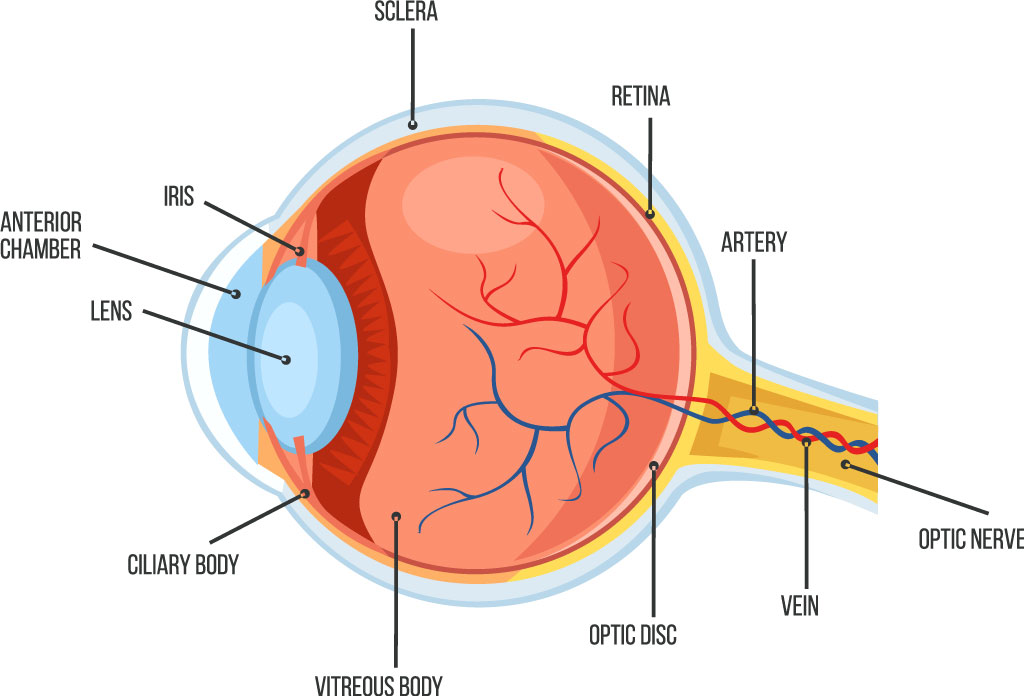Eye health
This fact sheet is for people who have had a blood and marrow transplant (BMT).
BMT patients may experience health complications in the months or years following the transplant. Long-term follow up has an important role in the early detection of any health issues.
This fact sheet has general information about ways to look after your health. If you have specific concerns, speak to your BMT team or your doctor for further information and advice.
What causes eye health issues?
After your BMT, you may notice some changes in your vision or other symptoms of eye problems. This is very common in people who have had a transplant because of the effects of chemotherapy, radiotherapy and medications used as part of BMT, or used to treat graft-versus-host disease (GvHD), particularly steroids, and complications of BMT, including diabetes and high blood pressure.
Some of the eye problems that may occur following BMT include:
- ocular GvHD
- dry eyes (Sicca syndrome)
- cataracts
- retinal disease (damage to the retina at the back of the eye)
- infection (particularly from viruses).
What are symptoms of eye problems?

Some symptoms of eye problems include:
- changes in vision, such as double vision, poor night vision and fading or yellowing of colours
- loss of some fields of vision which may gradually lead to partial and complete loss of vision
- burning or dry sensation in eyes
- feeling as though something is in the eye
- sensitivity to light and glare
- eye redness
- increased moisture or tearing.
If you have any of these symptoms, tell your BMT team or general practitioner (GP). If you have these symptoms it is very likely that you will need to be seen by an eye specialist (ophthalmologist).
If an eye health issue is identified, how is it treated?
All eye problems are treatable. The type of treatment depends upon what the problem is and what symptoms it is causing.
Ocular chronic GvHD or dry eye disease may need to be treated with both immune suppressive medications used for GvHD (including prednisone, ciclosporin or tacrolimus) and topical treatments applied directly to the eyes (including preservative free lubricants, eye drops or ointments).
Although treatment of ocular GvHD or dry eyes is generally supervised by an ophthalmologist, there are also ways that you can help protect and treat dry eyes, such as
- Drink more water.
- Use artificial tears regularly. Be careful with ‘over the counter’ drops.
- Avoid use of prescription contact lenses.
- Blink frequently (and take breaks when looking at a screen or reading).
- Use a humidifier (with distilled water).
- Take care with make-up.
- Use a lubricating ointment at night.
- Use only preservative free drops.
Cataracts are generally treated surgically, by removal of the lens and replacement with an artificial lens. Not all cataracts need treatment. Cataracts may take years to become serious enough that they need to be removed. This means that even where there are early signs of cataracts (which often start 2-10 years after transplant), they can be monitored closely by an ophthalmologist and treatment recommended only when it is necessary.
How can I look after my eye health?
- Tell your BMT team and GP about any eye problems.
- Have a comprehensive eye examination by an ophthalmologist after a BMT.
- Protect your eyes.
- Wear UV protection sunglasses when you are in bright sunlight.
- Wear protective eyewear when you are using a lawnmower, power trimmer or edger, and when working with dangerous equipment, around dust or hazardous chemicals, or when playing sport.
- Avoid dryness – Keep your eyes moist to avoid irritation.
- Ensure that other health problems are properly managed – Take steps to prevent and properly manage health problems that may contribute to eye disease, such as diabetes, high blood pressure and high cholesterol.
Where can I find further information?
- Vision Australia. Eye health professionals. www.visionaustralia.org
- Health Direct. What does an ophthalmologist do? www.healthdirect.gov.au
- Children’s Oncology Group. Eye problems. www.childrensoncologygroup.org